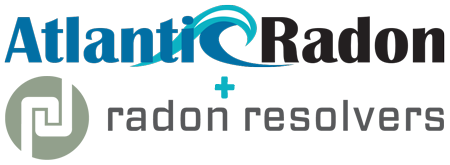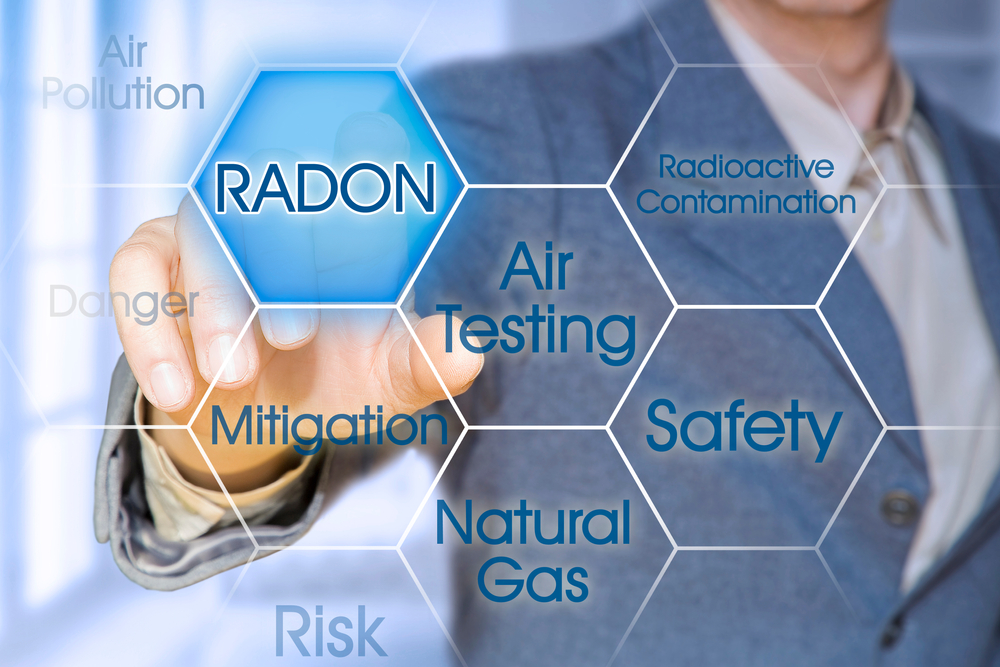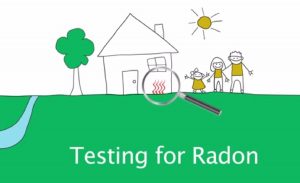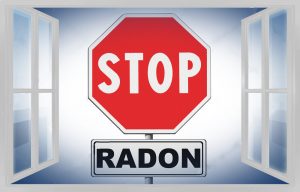An airborne element that is both odorless and colorless like oxygen, Radon isn’t really as safe as you’d think. So, how is mitigating radon possible?
Now, you may ask if there is a cause for concern breathing in something that you cannot see? While this may be true in some cases, Radon is a radioactive gas that can adversely affect your health if uncontained over a long period of time.
The problem – many homes have an elevated Radon level. A United States Environmental Protection Agency study says as many as one in fifteen homes in the U.S. have a radon level of more than 4 pCi/L.
How Are You Exposed to Radon?
People can be exposed to Radon simply by breathing in the air – including in their home and office. Radon is a natural gas that is formed when radioactive metals such as radium or thorium break down in the soil and groundwater. This gas then seeps through the small cracks in buildings, finding its way into places that you believe are safe.
While not being instantly fatal, Radon gas is one of the leading causes of lung cancer, only second to cigarette smoke. It has the potential to cause serious and long-lasting health effects, and it shouldn’t be ignored just because it isn’t visible.
The gas can be anywhere, so proper steps should be taken to mitigate the issue before it becomes a problem. For starters, regular testing for Radon at home and other commonly visited places can help you determine whether mitigating Radon is necessary.
Identifying unsafe levels of radon gas
Since radon is cancer-causing, it is deemed a carcinogen, and so there is no real “safe level” that should be monitored at home. Radon particles will attach to airborne particles such as dust which can then be inhaled by anyone in the room. Owing to this, even small amounts of radon gas can be detrimental in the long term.
However, because it is a naturally forming gas, there is no method to totally eliminate it from any property and so we are all forced to live with some “normal level” of this gas. Health organizations such as the WHO (World Health Organization), have determined a general level of radon gas that is acceptable to live with and is followed by most countries worldwide.
The measurement used is pCi/L (picocuries per liter of air). “Curie” is used as a standard measure of the intensity of radioactivity within radioactive materials. In general, it is recommended that if the measurements show:
- 2 – 4 pCi/L = You need to get your home inspected and take corrective measures
- Above 4 pCi/L = Focus needs to be placed on intensive radon control measures to reduce radon levels immediately.
Mitigating Radon: How does Radon cause lung cancer?
Being exposed to short bursts of radon gas does not have the potential to cause cancer just like how cigarette smoke is not immediately cancer-causing.
The true risk comes from prolonged exposure to rising radon levels which increases the chance of developing lung cancer. By continuously breathing in radon gas, the radioactive particles get trapped in your lungs, which turns into lung cancer over time.
The risk of getting cancer will be further exacerbated if:
- You spend a lot of time in areas with high levels of Radon
- Are exposed to other pollutants such as smoke from a fireplace
- You were or are a cigarette smoker
In the US, an estimated 21,000 people die each year due to lung cancer brought on by radon gas. It is the leading cause of lung cancer among non-smokers.
Will mitigating radon levels solve the problem?
Radon gas can be found outside properties as well, but it is much dangerous when it is confined as the gas will be prevalent in much more concentrated levels. So, if testing shows levels higher than 4 pCi/L, you do not want to wait.
Due to “radioactive decay”, radon gas will disappear over time, but this is not a recommended strategy for those who are able to afford radon mitigation services or who are exposed to high levels of the gas. Keep in mind though that elevated radon gas levels are easily remedied so you don’t have to panic if your tests show high levels.
Hiring a certified Radon Remediation contractor, such as Atlantic Radon, with experience in dealing with Radon will be your best bet at keeping your properties safe. Radon mitigation helps reduce the gas concentration by increasing ventilation and placing “layers” over the cracks to prevent gas from coming into the property.
Depending on your requirement, our team will visit your property and determine which method of mitigating Radon is necessary – a gas-permeable layer or improving ventilation. This can help reduce radon gas levels by up to 99% (gas cannot be eliminated completely), making your home safe to live in.
Atlantic Radon has professional and certified radon inspectors and technicians and we have been certified through the National Radon Proficiency program. With us, you are guaranteed a safe and expert service for all your radon-eliminating needs. Contact us today to get a free radon mitigation estimate before you commit to the full process.




